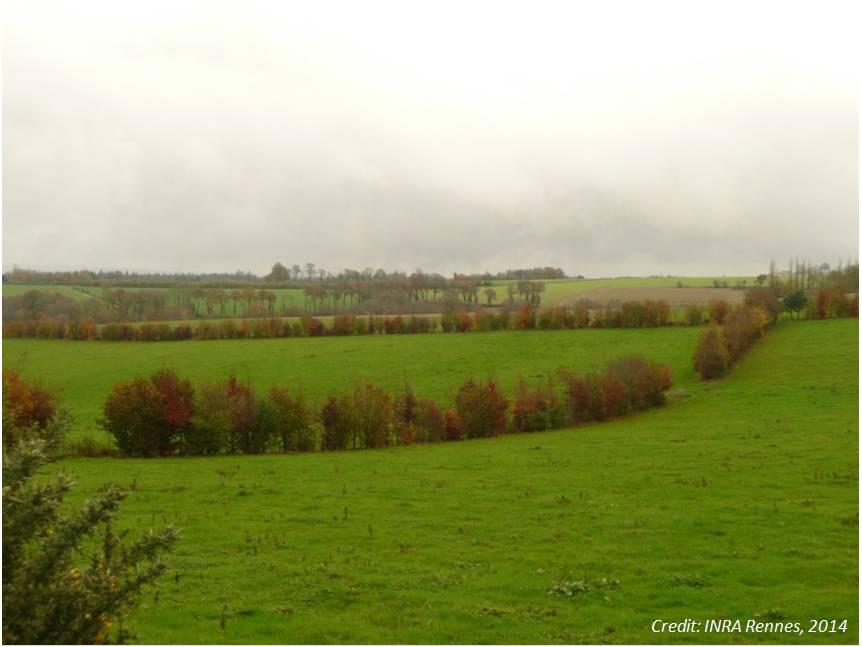
Bocage agroforestry in Brittany, France
Description of system
The hedgerow systems of Brittany in France are ancient agroforestry systems largely based on lines of high-stem and medium-stem trees. The main period of expansion of this agroforestry system was from the 18th Century to the end of the 19th Century. However from the 1950s, the process of agricultural modernization, intensification, and reallocation led to a decrease in hedgerows density. The mean density of hedgerow varies from 16 to 94 m per hectare across the different counties of Brittany. Since the 1990s, hedge planting schemes have been implemented to try to maintain the cultural landscape and to regulate nitrate and phosphorus pollution.
Initial stakeholder meeting
The meeting on 26 November 2014 was organized in association with the “Terres & Bocages” association. It was attended by 42 people (plus the two facilitators and the three researchers working for AGFORWARD Project). The key positive benefits of the hedgerows were seen to be biodiversity and wlidlife habitat, soil conservation, runoff control, and carbon sequestration. Negative issues included labour and management costs. Potential innovations including guidance on the choice of the number of lines and density of trees to get both shelterbelt and timber functions in the same hedgerow, and the development of hedgerow “models” to fit multi-purpose objectives.
If you would like to know about the activity of this group, please contact Dr Claudine Thenail; Claudine.thenail@rennes.inra.fr
Download the initial stakeholder report
Download the initial research and development protocol
A research and development protocol was produced in June 2015
Download the system description
A research update on the bocage agroforestry system in Brittany was produced in February 2016.
Lessons learnt
Claudine Thenail, Stéphanie Aviron, Valérie Viaud and colleagues at INRA Rennes in Brittany describe the lessons learnt regarding the French bocage system of hedgerows.
- Newly planted hedgerows (15 years after planting) harboured the same number of species (flora, butterflies, carabid beetles) as the traditional field margins.
- Although the results were not statistically significant, soil carbon levels in top soils were higher within 6 m of the hedgerow than at a distance of 18 m.
- At a field level, there is no simple relationship between wheat yield and whether the field was bordered by flat herbaceous field margins, old and/or new planted hedgerows.
- At least three of six farmers, asked about the time spent on hedgerow management, indicated that they or their staff spent 5-20 periods of 5 hours per year on the cumulated activities of tree pollarding, tree lateral pruning, and mechanical brush clearing.
- According to the interviewed farmers, the new hedgerows were providing protection for cattle, successfully constraining cattle movement, the regulation of runoff and soil erosion, improved landscape aesthetics, and successful designation of property limits. Firewood production and the protection of wild fauna were mentioned as supplementary benefits.